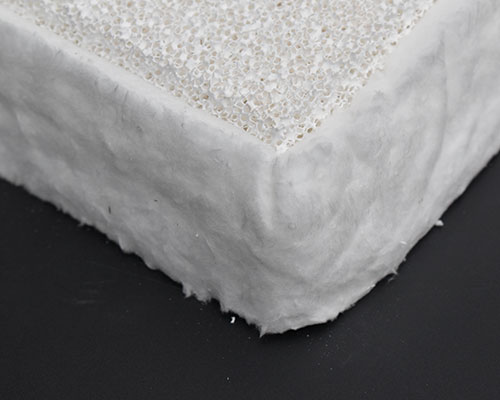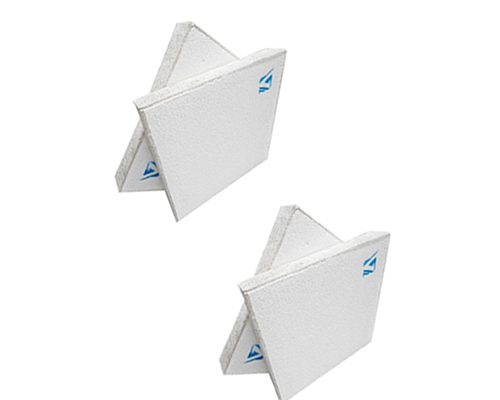Porosity is the percentage of the total volume of cavities in the ceramic foam filter plate product relative to the total volume of the filter plate product. Porosity determines the filtration capacity of the ceramic foam filter plate per unit volume. The greater the porosity, the greater the filtration rate of the filter plate and the greater the filtration capacity, and vice versa.
Porosity determining ceramic foam filter manufacturing process. There are currently two main methods for determining porosity.
One is to calculate the volume of the hole in the filter plate according to Archimedes’ law, that is, to inject water into the glass beaker with the overflow pipe until that water is flowing from the overflow pipe, and the water will be tested when the water is no longer flowing. All samples are gently placed in water, then water flows out of the overflow tube and the volume of water in this part is measured. The volume of the overflow water is subtracted from the physical volume of the filter plate, which is the total volume of the filter plate holes. volume.
Another method is to separately determine the actual density and the bulk density of the test sample and then calculate the porosity of the sample according to the following formula.
These two methods have their own advantages and disadvantages. The method of operation is simple and convenient, and the detection speed is fast, but its fatal weakness is due to the water absorption characteristics of the filter plate material itself so that the volume of water discharged is less than the actual volume. This makes the measured data too small.
Although the test process of the second method is more complicated, the influence of water absorption of the filter plate material is excluded during the test and the data obtained is relatively accurate.

The porosity index is determined to be greater than 84% in this standard. Pore uniformity is used to describe the difference between the number of actual holes per 25.4mm length in the filter plate product and the number of holes theoretically required.
The smaller the space, the better the quality of the product and if the space is too large, which will cause the ability of the filter plate product to reduce the retention of impurities or the slow filtration rate of the cast iron, which will not meet the user’s individual production requirements.
The size of the pore uniformity mainly depends on the foam used in the production of the ceramic foam filter plate. The pore uniformity of the foam is good and the pore uniformity of the filter plate is good, so the choice of foam is extremely important.

